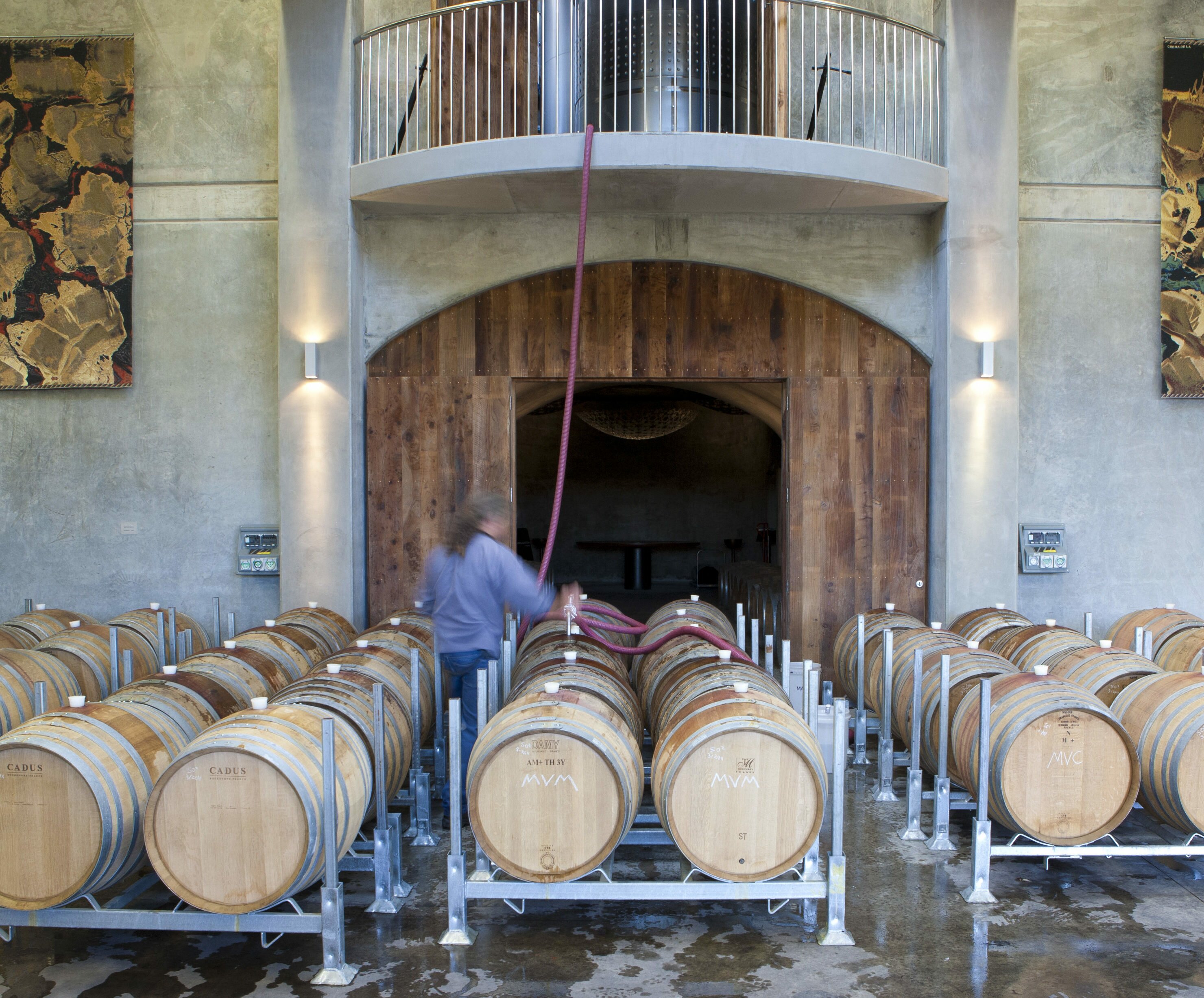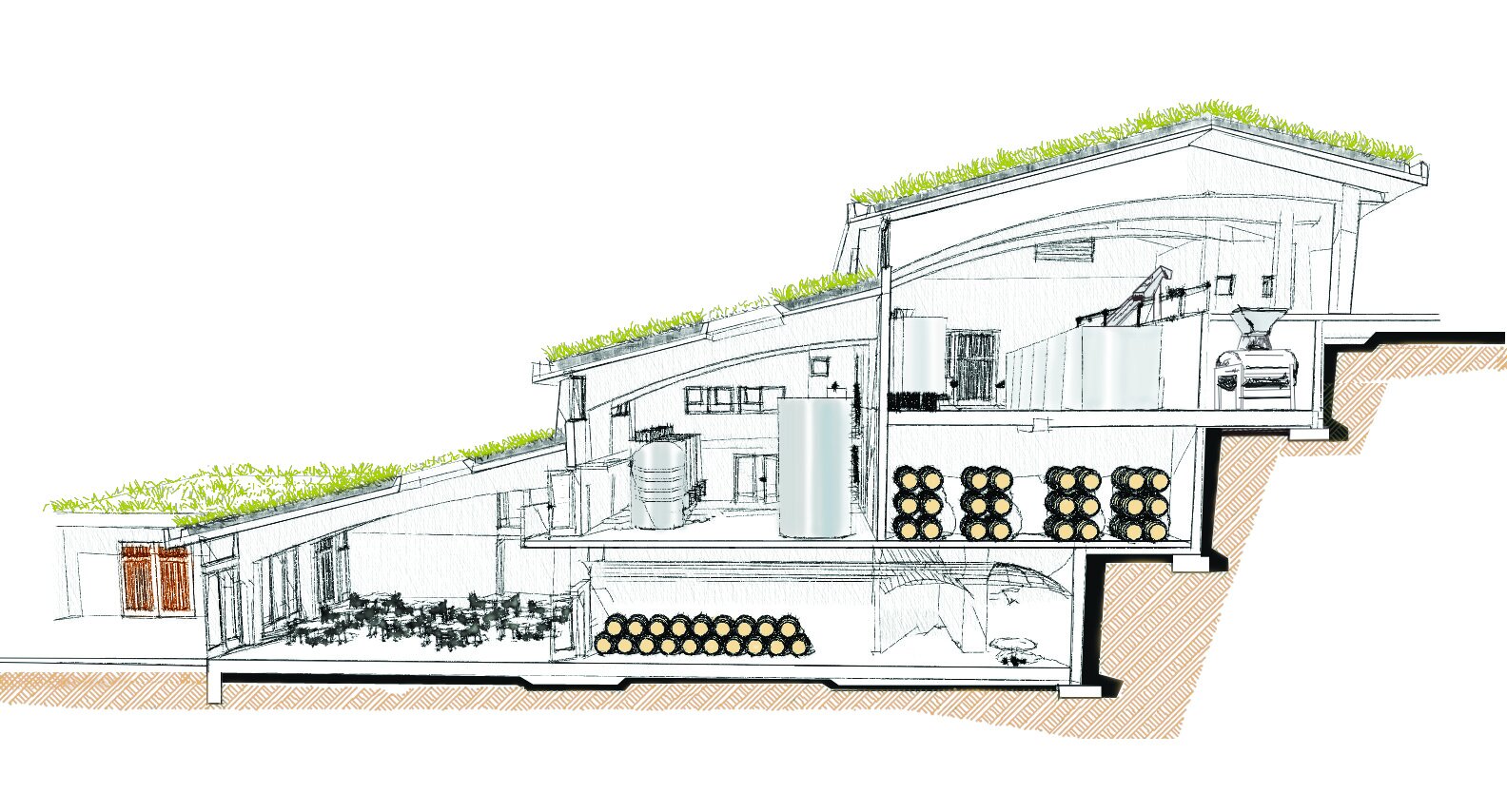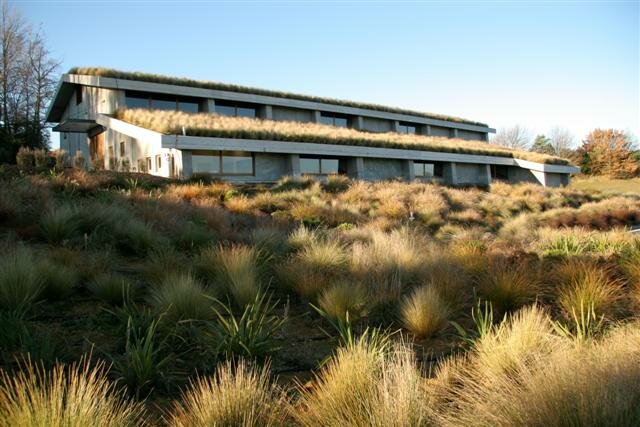-The winemaking at Mahana is far from conventional-
It is often said that great wine is made in the vineyard – all of our grapes are estate-grown, enabling quality control from the vineyard
all the way to the bottle.
We strive to produce grapes, which not only reflect their soil, climate, and environment, but also the people who curate them each season. Through a holistic approach, the inspired team works on each individual site to build strong, resilient vines grown in vital, healthy soil. Each of our three vineyard sites was chosen for their unique character. Our wines express terroir and an artisanal approach, distinguished by our gentle handling in our gravity flow winery.
-The winery stands to last a hundred years and reduces our energy consumption over time.-
Set into the Mahana hillside, its ‘living roof’ of native tussock and shrubs allows it to blend gently with the surrounding landscape. The unique four-level gravity-flow winery was designed by Oregon winery architect Larry Ferar.
Our winery combines the best of traditional winemaking practices with state-of-the-art modern equipment, allowing us to craft distinctive wines that reflect the place in which they were grown and the care with which they were made. The winery and vineyard teams work closely together to produce fruit of the highest quality in the vineyard, then vinify it with the minimum of intervention to achieve full, concentrated flavours.
Hand-sorting starts the process and gravity moves the wine through the four floors of the 18m high winery, eliminating as much as possible the use of pumps. This reduces electricity use and more importantly, allows gentle handling of the wine to retain fruit aromas and maximise flavour concentration. Power is also saved in the temperature control of our insulated wine tanks through a precisely managed computer system and by the passive cooling of the winery itself, which is partly buried in a south-facing hillside and insulated by its ‘living roof.’ As well as reducing our energy footprint, this process minimises temperature fluctuations in our cellars, benefitting the wine aging in barrels and bottles.
The winery is a vibrant place, the dramatic architecture complementing the magic of the creative process. This is particularly so during vintage when the air is full of the primary fruit aromas of fermenting grapes, and afterward when the barrel cellars are redolent with the complex aromas of young Pinot Noir in French oak barrels.



